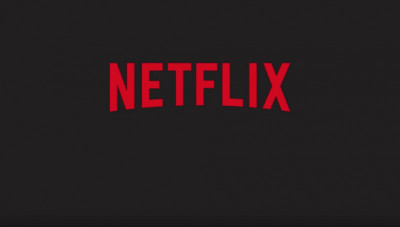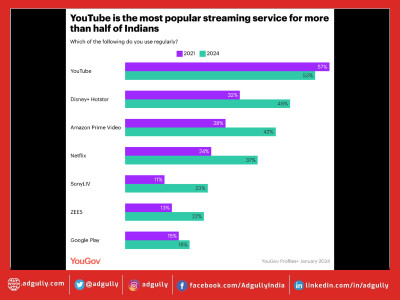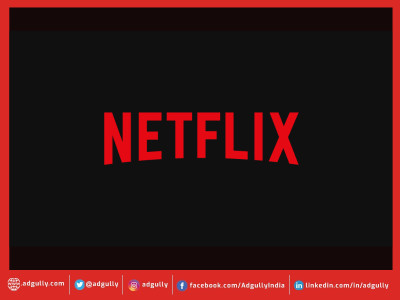Why Netflix’s vital financial parameters are showing signs of high stress?
Value investors Ramaswamy Ranganathan & Sudarshan Rajan, who also teach the valuation craft at leading business schools, do an in-depth analysis of the financial health of Netflix. Both industry experts state that while the subscription growth of Netflix has been phenomenal, there are several factors that can mar its financial health.
Netflix has changed the way content is consumed – the binge-watching disease which prevails amongst the youth and to a certain extent amongst the elderly is largely attributed to Netflix. The way content has evolved, the taste space, credit due to Netflix it has revolutionised the industry which was very fragmented a few years back.
Netflix has been truly disruptive in its approach; the word Disruptive innovation was coined by famed Harvard Professor Clayton Christensen in his brilliant book, ‘The Innovator’s Dilemma’. At the start of the cycle, the innovation isn’t perceived to be good enough and not even considered a threat to the incumbent.
According to this theory, a disruptive cycle starts to gain momentum in the low end of the market which is usually ignored by competitors. Netflix started its services with its DVD business, which was ignored largely by the competition and then slowly crept into the market, becoming too big to ignore. Innovation itself is an uphill task, disruptive innovation is a bigger task.
Netflix has gone on to scale up brilliantly. That the DVD business today is a dying business and the content streaming business is the mainstay business, calls for serious applause as Netflix brilliantly moved at the lower end, and today it dominates the streaming content business.
Today, Netflix boasts of over 167 million subscriptions, with revenue close to $20 billion, net income of $1.8 billion, and operating income of $2.6 billion. Optically, this looks impressive to say the least, but the surface is always made to look hard, beneath is what reveals the durability of the franchise.
Netflix has put itself deliberately in an unusual position of fix, the cash flows are bleeding with each passing year, they have got into a treadmill which only moves up with every passing year. The table below gives a look at the financials from a cash flow perspective.
Source Annual Report 2019 (for all data points mentioned in this article)
|
US Dollars in 000s |
2015 |
2016 |
2017 |
2018 |
2019 |
|
Net Cash from Operations |
(749,439.00) |
(1,473,984.00) |
(1,785,948.00) |
(2,680,479.00) |
(2,877,322.00) |
|
Free Cash Flow |
(920,557.00) |
(1,659,755.00) |
(2,019,659.00) |
(3,019,599.00) |
(3,274,386.00) |
Free cash is the most vital parameter to look for in any business, as it measures the true earning power. The biggest reason for the ballooning hole is the content profligacy of $13.9 billion spends on an annual basis. This treadmill is extremely dangerous, because this profligacy has made you a household name , but at the same time it has put the company in a fix. The 2019 numbers are terrible, to say the least, free cash being -ve to the extent of $3.27 billion.
|
Netflix ( US $ 000) |
2016 |
2017 |
2018 |
2019 |
|
Content Cash Spend |
8,653,000 |
9,805,000 |
13,043,000 |
13,916,000 |
|
Amortisation of Content |
4,788,000 |
6,197,000 |
7,532,000 |
9,216,000 |
|
Cost of Revenue |
6,257,000 |
8,033,000 |
9,967,000 |
12,440,000 |
The other notable aspect to make sense of is the customer acquisition cost (CAC) and how much it is spending to acquire the user in totality. Netflix has broken down the operations into International and Domestic. In a user-based business, it becomes extremely vital to analyse the CAC and how effective marketing investments have been over a period of years.
In a Subscription Video on Demand (SVOD) model, it becomes necessary to figure out the breakeven point to understand the overall picture as these businesses thrive of users. Hence, matrix related to users become very vital to determine the momentum of the business.
Let’s start by having a look at the domestic and international operations to have a comparative picture.
|
Domestic Membership Volume In 000s |
2015 |
2016 |
2017 |
2018 |
2019 |
|
Paid Net Additions |
5624 |
4504 |
4905 |
5676 |
2557 |
|
Marketing Spends |
317646 |
382832 |
603746 |
1025351 |
1063042 |
|
International Membership Volume In 000s |
2015 |
2016 |
2017 |
2018 |
2019 |
|
Paid Net Additions |
11747 |
13747 |
16649 |
22939 |
25274 |
|
Marketing Spends (US$) |
506446 |
648591 |
832545 |
1344118 |
1589420 |
The numbers here clearly tell us a story that marketing spends have risen consistently and so have the paid net additions. But the most critical part is the CAC, which the table below gives us a better picture to analyse.
|
Domestic Acquisition Cost Per User (US $) |
2015 |
2016 |
2017 |
2018 |
2019 |
|
Marketing Spends / Paid Net Additions |
56.48 |
85.00 |
123.09 |
180.65 |
415.7 |
|
International Acquisition Cost Per User (US $) |
2015 |
2016 |
2017 |
2018 |
2019 |
|
Marketing Spends / Paid Net Additions |
43.11 |
47.18 |
50.01 |
58.60 |
62.88 |
The tables above clearly reflect that CAC has risen by nearly 7X from 2015 onwards, clearly indicating stress numerically, at least on the domestic front. Couple this with the new launch service of Disney+, Apple, and other networks getting strong on the content war, and we clearly see this rising as marketing spends will skyrocket due to competitive pressures and yield on marketing investments (Net additions ) will taper or plateau.
What is the major impact of this forced spending, which is inevitable due to competitive pressures? Remember, in any user-based business the value of user is important, but more than that it is assumed that the user becomes valuable and loyal and will generate revenue in future as marketing spends goes into acquiring the user.
The critical element is the breakeven point. Let’s dive into a breakeven point matrix and see what the overall picture is there.
|
Domestic Revenue Per Subscriber for 2019 (US$) |
12.62 |
|
Contribution Margin |
36% |
|
Contribution Per Subscriber |
4.52 |
|
Total Amount of Spending in Acquiring the User |
415 |
|
Breakeven (Months) - Contribution per user / CAC |
91 |
|
International Revenue Per Subscriber for 2019 (US$) |
8.34 |
|
Contribution Margin |
15% |
|
Contribution Per Subscriber |
1.23 |
|
Total Amount of Spending in Acquiring the User |
62.88 |
|
Breakeven (Months) – Contribution per user/ CAC |
51 |
The overall contribution margin for domestic business is a robust 36 per cent, while international is at a meagre 15 per cent contribution margin. At this current pace, domestic breakeven for Netflix is pegged at 91 months and international at 51 months.
This is in an environment where competitive pressure is bound to intensify. With Disney+, Hulu, Apple and all other tech companies eventually going to blow the content game, this clearly indicates that in the near-term Netflix will continue to bleed on the content expense. The marketing cost will rise and the overall debt will balloon; currently, the debt is a little above $14.8 billion on the balance sheet.
Dupont Analysis: Equity Multiplier driving nearly 80% of ROE indicates the firm is highly geared virtually with no Margin of Safety.
The overall approach of Netflix is an evolving game and the way it has changed consumption of content is phenomenal. However, its vital financial parameters are showing signs of high stress, and it would be interesting to see how Netflix battles this and escapes the pain. Till that time it is wise to be a subscriber rather than an investor.


















Share
Facebook
YouTube
Tweet
Twitter
LinkedIn